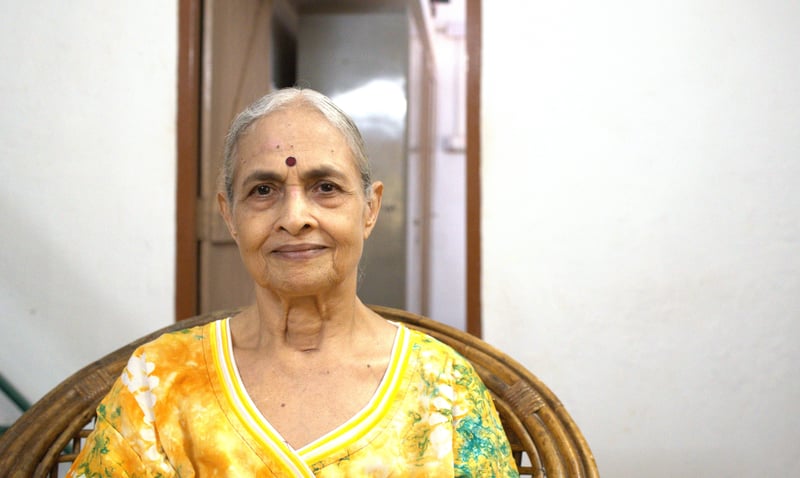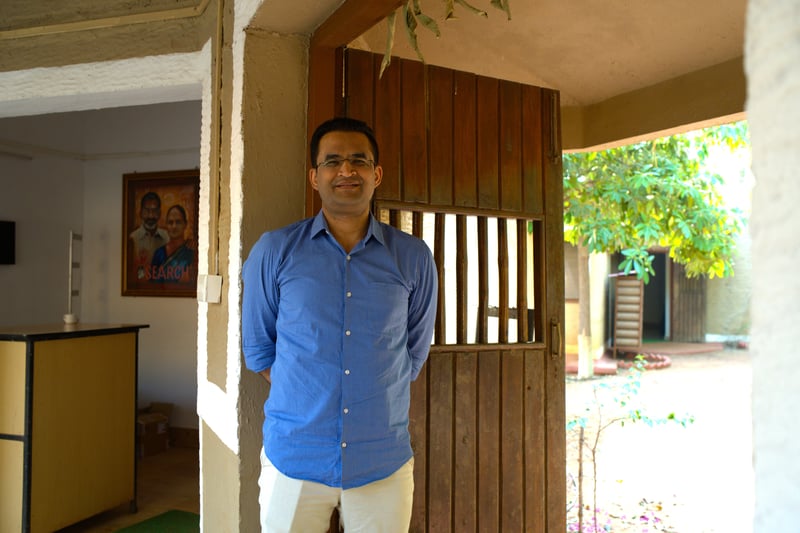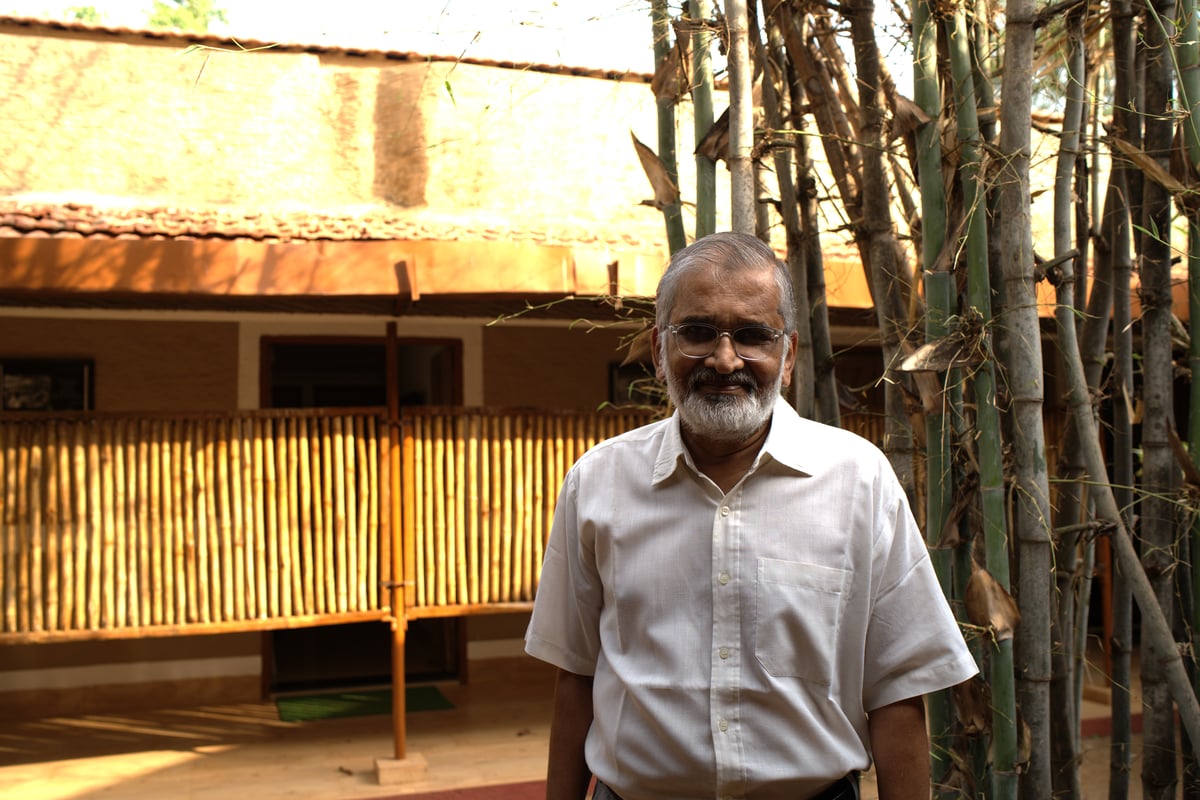Dr Abhay and Dr Rani Bang have spent the past 40 years living the Gandhian way – a simple, minimalist life in the midst of the communities they serve, and unrelenting hard work as part of that service. In the mould of M.K. Gandhi himself, the impact of their quiet, seemingly small-scale work has been larger than life.
The Bangs, both medical doctors with degrees in public health from Johns Hopkins University, are the founders of SEARCH – the Society for Education, Action and Research in Community Health. They have used their education to empower some of India’s most disadvantaged communities. Their success in designing and implementing research-based health interventions for rural and tribal communities has made them global legends in the field of public health.
Their non-profit, SEARCH, is particularly noted for its pioneering work in the field of maternal, child and women’s health. On the face of it, SEARCH’s work is hyperlocal. The organisation is located in a 45-acre campus in Maharashtra’s Gadchiroli district, and all its field research is carried out in a group of 269 villages, most of them remote, forested and inhabited by Gond tribes. But from this small corner of Maharashtra, the Bangs have been able to save lives across India and influence policy at a global scale.
The most prominent example of this is Home-Based Newborn Care (HBNC), an innovative healthcare model that the Bangs designed in the mid-1990s to bring down the high rate of infant mortality among rural communities. At the time, newborns were dying of preventable causes, including sepsis, pneumonia and asphyxia, merely because their families lived far from hospitals. SEARCH’s practical but radical solution was to rigorously train one woman in each village as an informal health worker, tasking her with providing essential care to newborn babies in their own homes. The care involved monitoring a baby’s vitals, identifying early symptoms of disease and administering basic antibiotics when necessary.
In just three years, the HBNC model brought down the neonatal mortality rate in 39 Gadchiroli villages from 62 deaths per 1,000 live births, to 25 deaths. The HBNC innovation found endorsements in international medical journals, was tested and adopted in 12 developing countries, and was officially adopted by India’s National Health Mission in 2011. Today, 10 lakh ASHA workers (accredited social health activists) provide village-level home-based care to newborns across India – a significant contributing factor to the drop in the national infant mortality rate from 50 in 2009 to 26 in 2022.
At the heart of SEARCH’s success is the primacy that the Bangs give to the needs of local communities in Gadchiroli. Their research topics and interventions are chosen based on problems identified by villagers at community assemblies – topics like malaria prevention, chronic pain, mental health and the spread of lifestyle diseases. On their campus, SEARCH runs a well-equipped multi-speciality hospital providing services that are not easily available at government health centres. They have taken care to make the hospital and other campus buildings resemble the homes in a typical Gond village.
In 2026, SEARCH will mark the 40th anniversary of its founding – decades that, along with struggle, have reaped recognition and respect for its founders, including the Padma Shri, one of India’s highest civilian honours. While Dr Abhay and Dr Rani continue to work at the forefront of its operations, the organisation is now being carried forward by their sons and SEARCH’s joint directors, Dr Anand Bang and Amrut Bang.
Earlier this year, I visited Gadchiroli and sat down with the family to look back at their incredible legacy. They spoke about their successes in community healthcare, their vision for SEARCH’s future, and what ‘scaling up’ means for them. Here are some excerpts from the extensive interviews.
What sets your model of community-based healthcare apart from the government approach to public health?
Dr Abhay: First, NGOs like us tend to be closer to communities and collaborate more with them than the government, because we have the advantage of smaller size and flexibility. Our beauty and strength is that we begin with community. I would say, in hindsight, that whenever I’ve had the arrogance of not beginning with the community, I have invariably failed.
Second, our very vision of how healthcare should be designed is to make people free from dependence on the medical system as much as possible. Mahatma Gandhi’s grandson once pointed out to me that the Hindi word for ‘healthy’ is ‘swastha’, which is made up of ‘swa’ and ‘sthit’ – one who is self-reliant. This definition became the basis of our vision: Arogya Swaraj. We believe that health is not something to be doled out on a regular basis. Our role is to make communities aware and empowered so that they can take care of their own health. Of course, this vision cannot be taken to its extreme. We do need doctors. But I would say that 80% of our health needs should be fulfilled within communities. For that, we raise awareness so that people can prevent ill-health, and we train community health workers to help when people do fall sick.
What challenges have you faced over the years in instituting and implementing SEARCH’s healthcare interventions in Gadchiroli, and how did you overcome them?
Dr Abhay: The first challenge is always your own ignorance. Our first misconception was that since we have opened a hospital here, in a tribal area, everyone will start coming to it. But that didn’t happen. A baby once arrived at our hospital from a village called Khursa, just 3 km away. It was gasping. We couldn’t save it, because the family had come too late. Even the 3 km distance had been too much for them, but it took us a few years to realise this. Our own medical ego and ignorance was the first barrier.
The second barrier is lack of data. There is no readymade data on community health, so you have to start generating your own data. Third is the ability to listen to people, which we don’t usually do. We would avoid a lot of blunders if we listened. In the past 30-40 years, most of SEARCH’s health priorities were given by the people at health assemblies that we organised. We followed their lead.
The fourth barrier that we still face is human resources. The more your work expands and grows in depth, the more professionals you need. But the human resources want to work in Mumbai, Pune, Delhi, New York – not live in Gadchiroli. Professional minds who have great training in science, who will be able to see the problems, measure them and hopefully develop solutions – unless they go to the place where the problems are, how will they actually solve them? We need people with scientific training to be willing to come to places like this.
You have created a number of specific interventions to suit the needs of Gadchiroli’s tribal population. Why do tribal communities need unique approaches to healthcare?
Dr Abhay: There are 11 crore tribal people in India. They come from 705 different tribes, usually scattered, living in forests or hilly areas, often in isolation. Most tribal villages are very small hamlets, far away from doctors and hospitals. They lack transport and money. The healthcare system in India is not designed for them. So how do we make them capable of taking care of their own health?
In 2013, the central government appointed a national committee under my chairmanship to investigate the status of health and healthcare in tribal areas. We worked for five years and eventually recommended several measures to make healthcare more accessible to tribal communities, so that in ten years their health status becomes equal to that of the state or national average.

Dr Rani, you were the first in India to study and address the range of gynaecological illnesses that rural women suffer from. How is India faring on that front today, in terms of research and treatment?
Dr Rani: I feel that some components of women’s reproductive health have definitely been addressed today, like the availability of safe abortion services that were previously absent in rural areas. Family planning methods like tubectomy and vasectomy are also increasing everywhere in India, even in rural and tribal areas. But there is a problem of lack of education. For example, there has been a lot of advertising for emergency contraceptive pills and many unmarried girls use them. But there is no education about when to take or not take them, which leads to a lot of misuse and complications.
The government has also introduced injectable progesterone as a contraceptive. They inject patients with it in public hospitals, but the nurses and doctors don’t have proper knowledge about the complications that may arise and how to deal with them. In my clinic, I find 5-6 cases every day of women who have been given injectable contraceptives and have developed complications like irregular or heavy menses.
Another problem is with IUDs [intrauterine devices]. At the time of delivery or medical abortion, government hospitals often insert copper-Ts in women without their knowledge or consent, and they later develop abdominal and menstrual problems. This is ethically not correct – it’s coercion. There needs to be a change in the government programme on this.
There is some work being done on adolescent sexual health education, but it is not comprehensive. The government programme is not very impressive. So I’m not very happy about that. Here [through SEARCH’s Tarunyabhan programme] we do extensive sex education workshops for boys and girls across Maharashtra.
You have written a book about the vocabulary that tribal women in Gadchiroli have for various aspects of their sexual and reproductive lives. What can other public health workers learn from your experiences?
Dr Rani: We doctors are trained to diagnose and treat a problem, but many times people don’t accept our health services. It’s very easy for us to push that responsibility onto them, to say that they are illiterate and don’t know anything. But the tribal community here has concepts of anatomy and the physiology of reproduction that are entirely different from ours. Unless we know what their perceptions are, we cannot impart health education. So we have to educate ourselves first.
For example, the local community doesn’t have the concept of a diaphragm. They think all the vital organs of the body are in the abdominal area, and they believe that the uterus is open from above. Because of this, they think that heavy menses are normal, whereas scanty menses are a fatal disease – their assumption is that menstrual blood has gone out of the uterus to impinge on other organs.
As doctors, we know that for delivery to take place, you need the power of the uterine contractions to help push the baby out. But I studied 125 traditional birth attendants in the tribal communities, and they believe deliveries take place solely due to the baby’s own bodily movements. So they don’t believe still births are possible, because a child that’s died in the womb cannot come out at all. They also believe that thin and underweight babies are healthy, while babies with healthy weight are ‘lazy’ ones who sit idly in the uterus. They told me they would throw away the iron and folic acid tablets that we doctors would give pregnant women, because if the baby gained more weight, it could lead to obstructed labour.
Doctors generally do not have the time to listen to people and learn about these beliefs they have. But unless we know their perceptions, we cannot expect them to listen to us.

SEARCH’s work has impacted policies at the national and global level, but your interventions are very rooted here in Gadchiroli – you are not scaling up or setting up branches elsewhere.
Dr Anand: We don’t intend to do that. Gadchiroli will remain our key battleground, to find new solutions, develop modules and train others so that they can replicate our models. So many other non-profits set up their head offices in big cities, and then travel to rural sites. But if you work in Mumbai, you can’t necessarily create a strong bond with the community. But because we are rooted here in Gadchiroli, we have an extremely strong bond with the people and we constantly see the problems that need to be addressed. The bond makes a huge difference.
After 40 years, do you feel that SEARCH has achieved its main goals and vision? What milestones would you like to hit over the next 10 years?
Dr Rani: I think in these 40 years we have definitely reached our initial goals. But every time you throw a stone in a well, it disappears. It’s the same with health issues. Previously, infections of various kinds were the big problem, now it is non communicable diseases like heart disease, diabetes, cancer, etc. So we have to change our priorities with the times.
Dr Abhay: When we began, we had a vague vision. We were fortunate that we were able to put that vague vision into some strategies and priorities and practice it. SEARCH has been able to cover a lot of distance and I feel happy about it. But the more you walk, the horizon moves away. Newer challenges emerge, like the challenge of rising non-communicable diseases. I would like us to solve some proportion of this problem – create a model for prevention, rehabilitation and care for non-communicable diseases, and make it available in Gadchiroli in a way that similar models can be adopted in other rural areas.
The real test of SEARCH will be, can we continue to receive those signals of the emerging and changing needs of the people here in Gadchiroli for whom we work? Can we design newer strategies, bring in more human resources and financial support? If all these things continue, we will be able to walk several more steps.
Amrut: We recently had a workshop trying to envision what SEARCH will be like in 2047. Our emphasis on healthcare, the marginalised and the youth – these will remain. Specific projects may keep changing, and we’d like to be in an evolving state. We don’t visualise SEARCH as a monolithic behemoth – we don’t want to have the model of increasing our branches in lots of different places. As an organisation, we want to be a laboratory for social change that takes different social problems and works to find solutions for them in an agile, reflective, reflexive and innovative way.
Dr Anand: In the future, I see us as a platform for high quality and committed human resource professionals who can use this umbrella, this infrastructure, to do very high quality work. I also want us to keep creating new knowledge, training others, and shaping policy through the democratisation of research. We want to continue to be a beacon for civil society and the values of Mahatma Gandhi.
